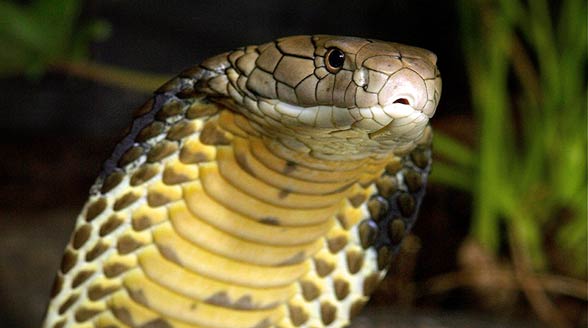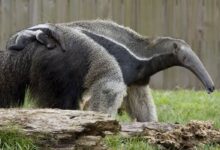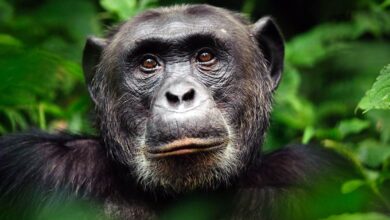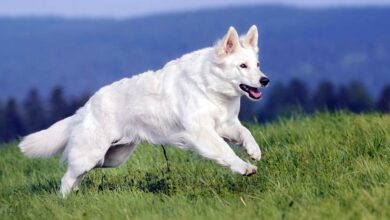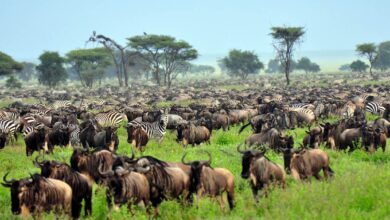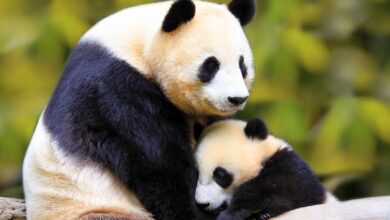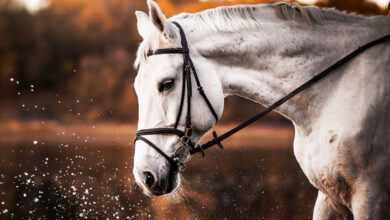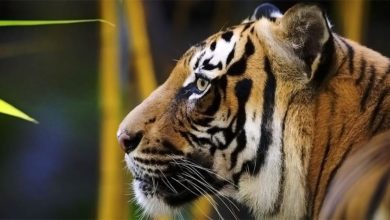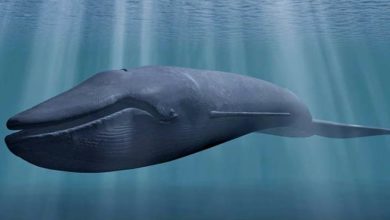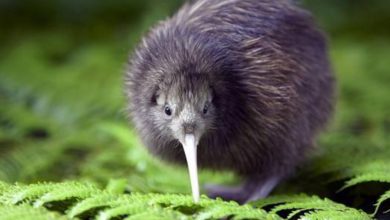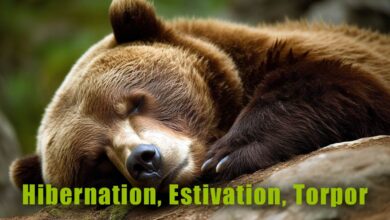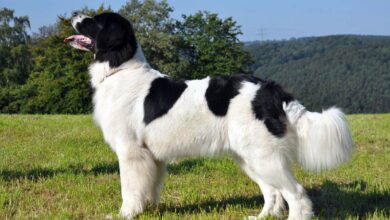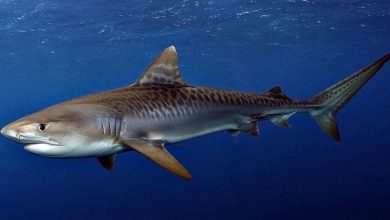Cobras – brief characteristics
Cobras are highly venomous snakes that have long fascinated humans. When a bite occurs, the only salvation for the victim is often the rapid administration of serum. Interestingly, some species do not need to use their teeth for direct venom injection during an attack. Cobras are snakes with very strong venom, dangerous even to humans. These reptiles are found practically all over the world, wherever it is warm, and at the same time there is a sufficient amount of food.
King cobra (Ophiophagus hannah) – the largest venomous snake in the world
The king cobra grows up to 5.85 meters (19.2 ft) in length and weighs up to 9 kg (20 lb).
If you want to learn a bit more about cobras, check out our extensive article: Cobras dreadful snakes. Today we present a few facts about these amazing snakes.
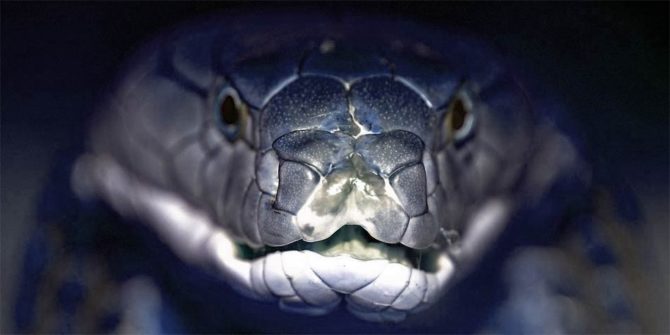
Occurrence
Cobras usually live near water, in neglected gardens and plantations, and sometimes in the immediate vicinity of human homes. They like old buildings and places with a lot of rubbish.
Cobra species
There are several species of cobras. The most famous are:
- Indian cobra (Naja naja)
- King cobra (Ophiophagus hannah)
- Egyptian Cobra (Naja haje)
- Chinese / Taiwan cobra (Naja atra)
African cobras:
- Banded water cobra (Boulengerina annulata)
- Rinkhals / ring-necked spitting cobra (Hemachatus haemachatus)
- Egyptian cobra (Naja haje)
- Mali cobra / Katian spitting cobra (Naja katiensis)
- Forest cobra / black and white-lipped cobra (Naja melanoleuca)
- Mozambique spitting cobra (Naja mossambica)
- Black-necked spitting cobra (Naja nigricollis)
- Cape cobra / yellow cobra (Naja nivea)
- Red spitting cobra (Naja pallida)
Asian cobras:
- Indian cobra (Naja naja)
- Caspian cobra / Central Asian cobra (Naja oxiana)
- Chinese / Taiwan cobra (Naja atra)
- Monocled cobra (Naja kaouthia)
- Equatorial spitting cobra (Naja sumatrana)
- Javan spitting cobra (Naja sputatrix)
- Samar cobra (Naja samarensis)
- Philippine cobra (Naja philippinensis)
- King cobra (Ophiophagus hannah)
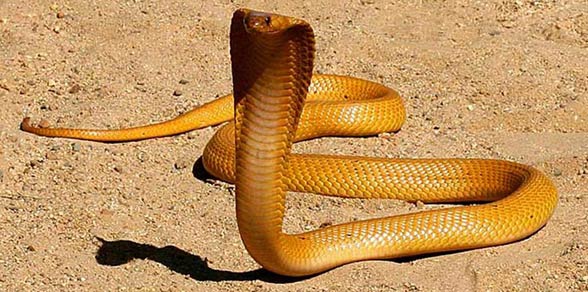
Hood
Cobras have a kind of hood around their necks, which spreads out when snake is threatened, making the snake seemingly larger and more dangerous to the opponent. Often there is a characteristic pattern of glasses or a circle on the hood.
Attacks on people
Cobras do not attack humans because humans are too big for them to be food. An attack is only possible in case of imminent danger, e.g. when a snake is stepped on.
Food
The food of this snake is usually small animals, such as rats, frogs, and sometimes birds.
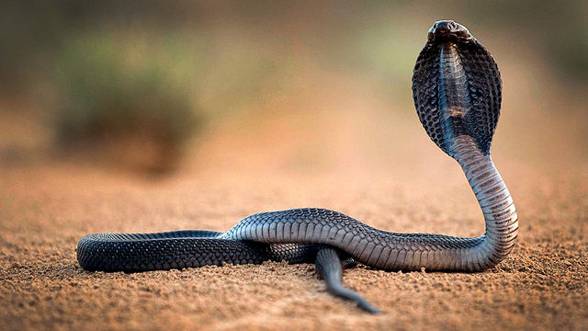
A bite – cobra venom
When a bite occurs, the only salvation for the victim is often the rapid administration of anti-venom serum.
During an attack, cobra venom teeth pierce the skin of the victim and then inject the poison. The snake then tightens its jaw tightly, which causes more venom to enter the body.
Cobra venom acts on the victim’s nervous system by blocking breathing. A few minutes after the bite, it is usually over – the affected animal dies due to cardiac arrest.
Even a small amount of king cobra venom is enough to kill 30 people.
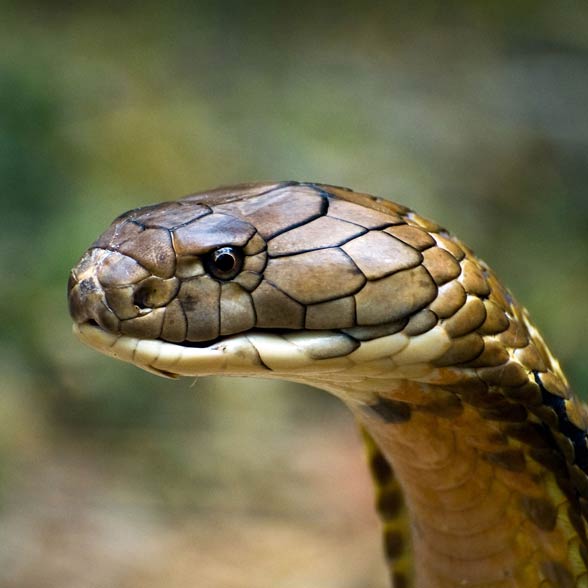
Snake charming
In India, you can meet the spectacle of snake charming. The most frequently used snake in this ritual is the Indian cobra (Naja naja). The spectacle of snake charming takes a dramatic appearance when the irritated cobra, like other snakes in this state, tightens the skin around the neck with its ribs, thus creating a shield. The cobra is brought into this state by suddenly removing the lid of the basket it is in. The frightened snake straightens up and waits with the shield taut. The snake charmer plays a rhythmic melody, swaying from side to side, and the snake will follow his movements, prepared for a possible attack.
In fact, the charmer is completely safe, because before that he had either stripped the cobra of his venomous teeth, or what happens quite often – he sewed up her mouth…
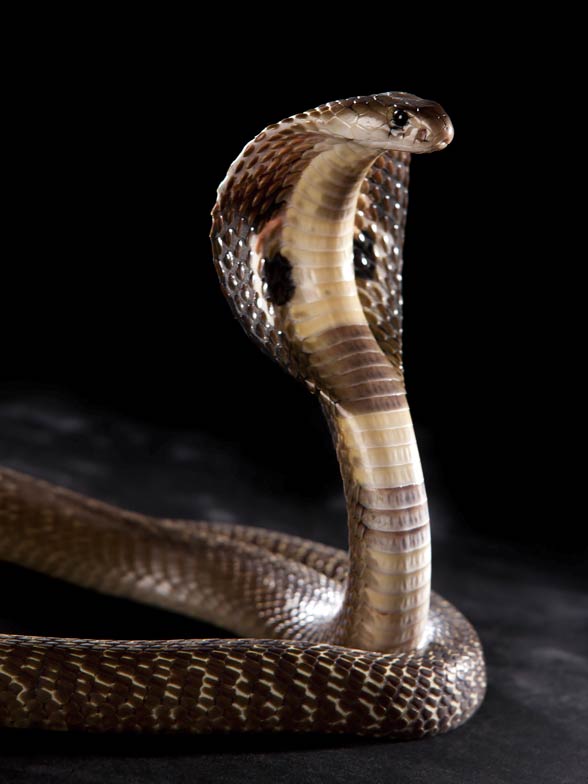
Cobra – interesting facts
- The king cobra is the largest venomous snake in the world. Its venomous teeth reach 1.5 cm in length.
- The largest captured cobra specimen was 5.85 m (2 ft) long and weighed 9 kg (20 lb)
- With one cobra bite, it can kill an adult elephant (death occurs after 3 hours)
- Cobra is a great swimmer and climbs trees.
- The black-necked cobra attacks its victims without biting, spitting venom (even at a distance of several meters) in the eyes of the intruder.
- Cobras are timid creatures that run away from humans.
- Even a small amount of king cobra venom is enough to kill 30 people.
- The cobra is worshiped in many parts of India.
